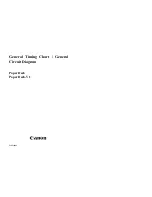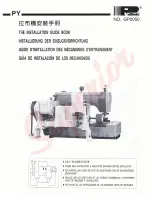
RS02109/0814/CD
21
www.cdtechno.com
9.5 Performance Tests
If desired by the customer, a full-load performance test can be conducted at the user’s original specified
discharge rate or the appropriate rate based on connector sizing per the following procedure:
•
Equalize charge the batteries if necessary, refer to section 8.3 equalization notes.
•
Let batteries float for 72-hours.
•
Perform the annual inspection.
•
Run a discharge test at the system designed rate per IEEE 1188.
Part 10 - Battery Degradation
10.1 General Information and Precautions
When properly maintained and charged, the Liberty 2V batteries should provide many years of trouble-free
service. However, despite their inherent dependability, failure to operate and maintain them correctly can
lead to damage, shortened service life and possible loss of service. The following sections address some of
the most frequently encountered errors.
10.2 Float versus Cycle Life
Standby batteries such as the Liberty MSE are designed and constructed to provide long life in
continuous float service. They differ in their design from the 2V Liberty DCS cycling batteries. Standby
batteries are continuously charged at a comparatively low float voltage in parallel with the load, ready to
supply instantaneous DC power either directly to the load or by way of interfacing electronics, such as an
uninterruptible power supply (UPS) system. The name “stationary” implies the battery is usually
permanently placed in a given location and not transferred from place to place in its service life.
As such, standby battery life is directly affected by and will be degraded if subjected to repeated cycling.
Depth of discharge, number of discharges, rate of discharge, and the interval between discharges are all
determining factors in battery life. Cycling should therefore be kept to a minimum. To ensure that the battery
will perform during power outages and other emergencies, it is strongly recommended that testing be kept to
a minimum in accordance with the following practices:
•
The performance of an initial acceptance test not to exceed user’s originally specified system
reserve time.
•
A full-load service test should be performed not more than once every 12 months to verify battery
capacity at user’s originally specified discharge rate.
•
A monthly transfer test not to exceed 30 seconds of battery discharge time at user’s originally
specified discharge rate to verify system load transfer and electrical system performance.
The time that is required to synchronize the UPS and return to rectifier power must be taken into
account when calculating total discharge.
The user is expected to maintain complete records of all battery testing and emergency discharges in
order to comply with the requirements of the warranty.
Содержание Liberty MSE
Страница 1: ...RS02109 0814 CD 1 www cdtechno com MSE DCS...
Страница 36: ...RS02109 0814 CD 36 www cdtechno com...
Страница 37: ...RS02109 0814 CD 37 www cdtechno com...
















































